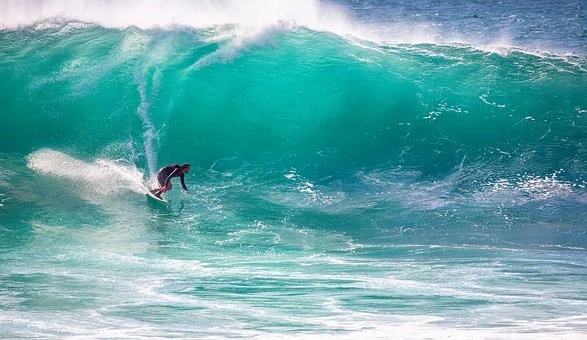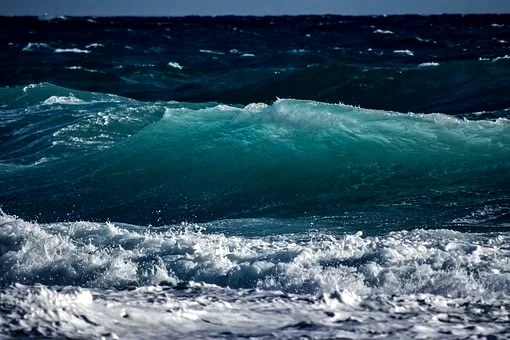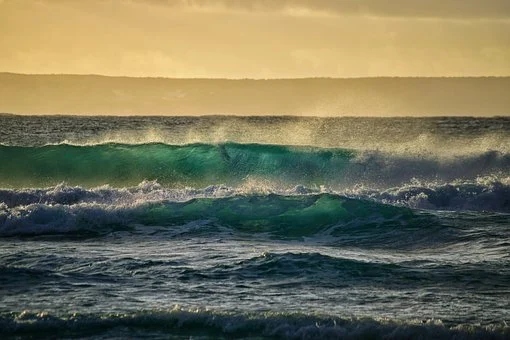In the massive world of surfing, every beginner comes as a novice who has very little knowledge about the waves. It is necessary for them to have full-fledged information before they perform surfing. Surfing is a way of living, it keeps you hooked once you are in it. To be able to tackle all the waves by paddling like a pro and pulling off some crazy tricks is every surfer’s dream.
What Causes Waves to Form?
Surfing waves are created when the wind impacts the water’s surface, generating a ripple effect. Significant air movements are also formed when temperature and atmospheric pressure fluctuate, which can induce large waves. But that’s only the beginning, for once the waves develop, they can travel hundreds or even thousands of kilometers before “breaking” and forcing you to surf.
For more info, read this detailed article on how waves are formed.
Let’s have a look at the 7 different sorts of waves you can experience before you go on your next surf trip. There are various different types of surf breakers, and you should be familiar with each one before charging them on your surfboard.
1. Beach Breaks
A beach break occurs when a wave passes from deep to shallow water over a sandy seabed. These waves are great for beginner surfers since they break with less intensity and are softer on those learning to ride them than reef breaks. Although beach break waves are usually short, the risk of serious damage is reduced because you will be landing onto a sandy bottom.
This isn’t to suggest that all breach brakes are easy to ride or don’t have a lot of power. Some of the world’s tallest and most powerful waves may be found in beach breakers like Nazare in Portugal.
2. Reef Breaks
Reef breakers are when the waves crash over a rock bottom. As a result, the seabed’s contour is permanent, and the line-up varies primarily in reaction to the swell’s magnitude and direction. There is normally a clearly defined channel next to the line-up for paddling out.
Although reefs break the bulk of the world’s largest and heaviest waves, there are plenty of gentler, more forgiving reefs to be discovered as well. Even now, beginner surfers tend to avoid reefs. The reef itself, which may be found just a few feet below the water’s surface, is the most dangerous threat.
Waves routinely crash over live coral in tropical places, which may lacerate a surfer’s skin at the least contact, leaving injuries that are often infected if not treated correctly soon enough.
3. Point Breaks
When swell lines approach a length of land at an oblique or even perpendicular angle, they break around the earth rather than directly towards it, resulting in a point break. They’re more likely to happen near a cliff and can break over sand or rock, but the ensuing waves peel for far longer than most beach breaks or reefs.
Some point breaks, like as Malibu Beach in California, provide mellow, flowing waves at a leisurely pace, making them ideal for longboarders; others specialise on draining barrels or high-speed, powerful walls.
4. Rivermouth Waves
All types of surfers enjoy these waves, although they are incredibly rare. They’re similar to point breaks in that they’re formed when water deposits sand on sandbars, causing the waves to peel off in a clean and predictable pattern. River mouth waves may be found in Munkada, Spain, and other places of Europe.
5. Reform Waves
This unpredictable wave can die down when it hits deep water and then reform or break again due to the bottom’s varying depth. These are said to be suitable for both all types of surfers. Experienced surfers can kick out before the new waves go deeper and beginners can turn to inside reform waves.
6. Crumbly Waves
These waves, also known as mushy waves, are simple to identify since they are not excessively steep, quick, or hollow, and they crash gently. These waves are caused by very gradual bottom contours.
They’re not particularly strong or powerful, thus they’re best suited to novices or those learning to surf techniques. Furthermore, they may be found practically anywhere.
7. Double-up Waves
This wave is the outcome of two waves colliding and merging. As a consequence, you get a huge and strong wave. These waves are extremely hazardous and hollow, especially when they break. They’re great for professionals or those with a lot of expertise.
Aside from that, you should be able to tell where a wave is headed. A left-hand wave, for example, is one that from the surfer’s perspective peels or breaks to the left. We’ll explain you all about the different sorts of waves and which one is best for you at Pacific Surf. Get in touch with us right now to learn more.
















